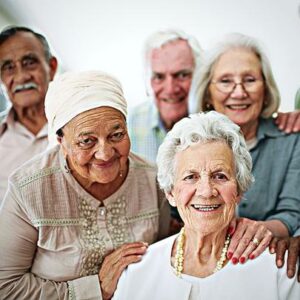There are approximately 1.6 million of America’s most vulnerable members of society who reside in nursing homes. While nursing home abuse takes many forms, and the nursing home abuse epidemic has flooded newspapers and news stations across America for quite some time, there is one form of abuse that has seemed to escalate in recent years, and unfortunately, it is difficult to detect. The nearly invisible offender is commonly referred to as “chemical restraint”.

Unnecessary chemical restraint, which is the excessive use of medications for behavior control and restraint, although highly illegal, has become common practice in nursing homes. Additionally, the unnecessary use of anti-psychotics, which is the most common type of drug used for chemical restraint, has become a growing concern in recent years. In fact, according to the United States Food and Drug Administration, approximately 300,000 nursing home residents are being given anti-psychotics to suppress aggression and anxiety that is often associated with Alzheimer’s Disease and other forms of dementia, and an alarming 15,000 nursing home residents lose their lives as a result of unnecessary anti-psychotics each year.
Under federal law, the use of chemical restraints to increase staff convenience, as a form of punishment, or for any other non-medical reason is prohibited. Legally, the only time chemical restraints can be used is in situations where the individual is at risk of harming himself or herself, or the patient’s behavior jeopardizes the safety of staff members or other residents. Even when these conditions exist, the duration of treatment and type of chemical restraint to be used must be outlined in the patient’s medical records. An important point to remember, however, is that the FDA has not approved any drug to be used as a chemical restraint.
Types of Chemical Restraints
In most cases, psychopharmacological drugs, which alter the patient’s behavior, mood, thinking and sensation are primarily used. These types of medications are often effective to relax or sedate a patient who is displaying violent or unmanageable behavior. These drugs should be used with extreme caution, because many of them pose the risk for severe side effects- especially for elderly patients.
Anti-Psychotics
As discussed previously, anti-psychotics are the most common type of medication that is used for chemical restraint in nursing homes. Unfortunately, it is also extremely dangerous for patients with certain conditions. Anti-psychotics can cause life-threatening heart conditions as well as increasing the chances for infections and death in dementia patients.
Benzodiazepines
This type of drug is often effective for treating anxiety, agitation, panic attacks and insomnia.
Dissociative Anesthetics
A type of hallucinogen, these drugs dissociate patients from themselves and their environment. They are so intense, however, that they are not as commonly used as other medications.
Consequences of Chemical Restraints
In addition to increasing the risk of death in some elderly patients, chemical restraints commonly cause a number of side effects.
- Fall Risk: These types of drugs may influence the resident’s postural control or cerebral perfusion which can adversely impact balance and increase the risk for a fall. Injuries that are suffered as a result of a fall can lead to further decline in patient health and physical function.
- Memory Impairment: Overuse of chemical restraints can cause the patient to experience confusion, disorientation and possibly even suffer amnesia.
- Agitation: Some hypnotic or sedative drugs increase violent behaviors, cause insomnia and induce agitation.
- Functional Impairment: Many patients who are unnecessarily treated with psychotropic medications experience a decline in their ability to perform daily activities like eating, using the restroom, dressing or walking.
Elderly individuals are more prone to suffer side effects from psychotropic medications than younger people, and many times, family members of residents will notice decreased consciousness or lack of responsiveness when their loved one is being abused with the use of chemical restraints. The Nursing Home Bill of Rights, which was established in 1987, specifies that residents have the right “to be free from physical or mental abuse, corporal punishment, involuntary seclusion, and any physical or chemical restraints imposed for purposes of discipline or convenience, and not required to treat the resident’s medical symptoms”. Additionally, the Bill states that chemical or physical restraints should only be used to protect the safety of the resident or others.
Under federal law, any drug used in the following ways is considered unnecessary and therefore prohibited.
- Excessively in dosage or duration
- Without adequate indications for its use and adequate monitoring
- In the presence of adverse consequences
- In any combination of the reasons above
Any time there is an indication of nursing home abuse with the use of chemical restraints, the situation should be aggressively investigated, protested accordingly, and when necessary, a lawsuit should be filed in order to protect the safety of America’s most vulnerable citizens.







